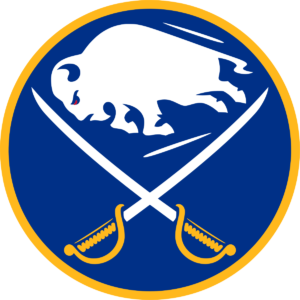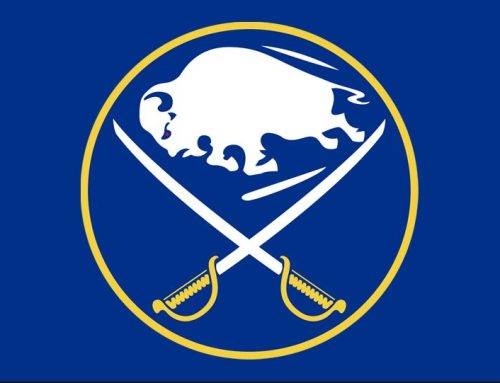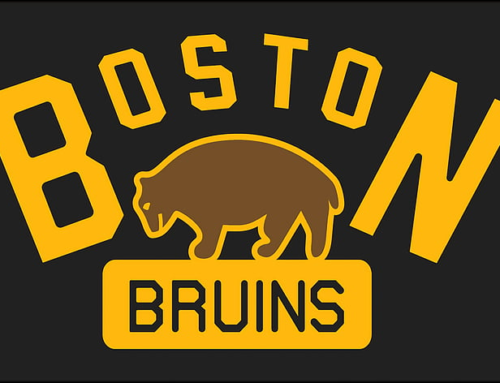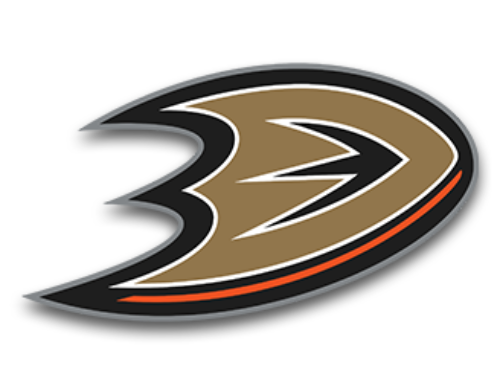September 32-in-32: Buffalo Sabres
Kevin Wong
2022-09-05
Welcome to the September 2022 edition of the DobberProspects 32-in-32 Series. This month, we are diving into the depth of each organization, looking at their recent graduates, risers, fallers, and top-20 prospects.
*************
By: Kevin Wong
It seemed unlikely twelve months ago that the Buffalo Sabres would be where they are today. In the months since drafting Owen Power in July 2021 and their acquisition of Alex Tuch and Peyton Krebs this past November, the organization has seen a plethora of prospects audition admirably for roles with the team in addition to an instance of unexpected stardom.
Tage Thompson, who in 2020-2021 was a middle-six forward with the Sabres, blossomed last season into a major force. His stellar 38-goal, 68-point campaign earned him a seven-year, $50 million extension this past week. His towering size, his freewheeling style of play, as well as his chemistry with Tuch and Jeff Skinner, the latter of whom experienced a 33-goal, 63-point comeback season, have helped the Sabres forge a new team identity and pivot towards a faster, stronger, more creative style.
Meanwhile, Power, Krebs, Mattias Samuelsson, Casey Fitzgerald, and Brett Murray, merely prospects before the season started, all contributed adequately and demonstrated that they could perform at the NHL level in 2021-2022.
The Sabres fortified their prospect pool with three first-round selections this year in Matthew Savoie, Noah Ostlund, and Jiri Kulich. Both J.J. Peterka and Jack Quinn thrived offensively in Rochester and are expected to begin the upcoming NHL season with the Sabres. Rasmus Dahlin broke the 50-point barrier for the first time in his NHL career, and Dylan Cozens scored 38 points in his sophomore campaign.
Furthermore, the former 2020 seventh-round selection Devon Levi, included by the Florida Panthers along with a first-round pick in their exchange for Sam Reinhart, became an NCAA superstar this season with a record-setting goaltending performance that earned him the Mike Richter Trophy, collegiate goaltender of the year honors, a place on Team Canada’s 2022 men’s Olympic team, and the distinction of becoming a Hobey Baker Award finalist.
From yesterdays show 👇 pic.twitter.com/u0h24KJFdY
— Sabres Live (@SabresLive) July 28, 2022
The 2021-2022 hockey season was a remarkable course correction for the Buffalo Sabres, who only a calendar year ago seemed unlikely to find much short-term optimism. With their prospect pool reloaded with high-quality talent and their younger professional players taking steps forward, the organization’s outlook appears to be as bright as it has been in years. A youth movement is underway, which should excite Sabres fans as they await the return of a competitive atmosphere that has not been seen in Buffalo in over a decade.
Graduating Players
After being drafted first overall in the 2021 NHL Draft, Owen Power chose to remain in Michigan in order to pursue an NCAA championship. Despite falling short of that goal, Power thrived with his college club, doubling his totals from sixteen points in 2020-2021 to thirty-two in 2021-2022. With three goals and 29 assists, Power was second among the University of Michigan defencemen in scoring behind only fellow 2021 draftee Luke Hughes. Their team reached the Big 10 Championship, losing 3-2 to the Minnesota Golden Gophers in the final match.
At the 2022 World Junior Championship in December 2021, he quickly became a primary focus of the event after scoring a hat trick and five points in two games before the tournament’s cancellation. He also represented Team Canada at the 2022 Winter Olympics in Beijing after the NHL opted not to participate. He fared admirably, although there were some notable instances when he turned the puck over due to inexperience and moments of over-zealousness with the puck.
Subsequent to the conclusion of his NCAA campaign, Power made his NHL debut with the Buffalo Sabres against the Toronto Maple Leafs on April 12, 2022. In that match, he demonstrated his high-level composure by breaking up a few key plays, including a pivotal scoring opportunity for the NHL’s leading goal scorer, Auston Matthews. He used his size and reach effectively, showing signs that he could already process the game at the NHL level. As the NHL’s regular season wound to a close, Power became more acclimated to the pace of the NHL and began to contribute in a playmaking capacity. He scored two goals and an assist in eight matches with Buffalo.
Flashback Friday to Owen Power handling the Leafs in his NHL debut pic.twitter.com/EEXcFNskTR
— Crossing Swords ⚔️ (@CrossSwordsPod) July 8, 2022
This sets the stage for Power to join the Sabres on a full-time basis this upcoming season.
Acquired in the Jack Eichel trade in November 2021, former 2019 first-round selection Peyton Krebs split time between the Rochester Americans and Buffalo Sabres during the 2021-2022 season. Despite beginning the year in the NHL with the Vegas Golden Knights, the Sabres opted to assign Krebs to the AHL when he arrived after the exchange. He scored fourteen points in sixteen games with Rochester before being recalled to Buffalo to represent the Sabres.
Aside from a brief return to Rochester in February, Krebs spent the remainder of his regular season in Buffalo. The 21-year-old prospect played 48 games during his rookie campaign with the Sabres, scoring seven goals and 22 points. He played as many as nineteen minutes per game in a handful of matches, although he averaged 14:45 of TOI over the course of the season.
RIGHT OUTTA THE BOX!
Peyton Krebs gets not only his first, but his SECOND career @NHL goal today😎#LetsGoBuffalo pic.twitter.com/cbsx7FY0AO
— Buffalo Sabres (@BuffaloSabres) January 22, 2022
Krebs brings additional skill and notoriety to a core group that is increasingly becoming comprised of recent, high-caliber, early-round draft selections.
In his second season as a professional, Mattias Samuelsson once again split time between the Rochester Americans and Buffalo Sabres. Last season however, he played nearly twice as many games in the NHL as he did in the AHL — 42 with Buffalo and 22 with the Americans. As one of the Sabres’ most important defenders this past season, the then-21-year-old Samuelsson averaged 20 minutes of ice time per game in a mostly-defensive capacity.
He blocked 60 shots and threw 100 hits in his half-season of play, rivaling only fellow defenceman, veteran Robert Hagg, in both categories with regards to busyness among fellow Sabres last season.
As Samuelsson’s heavy style of play and on-ice awareness continue to mature, his hard-nosed, shutdown role with the team will become more prominent.
Mattias Samuelsson is just too big pic.twitter.com/jVOmXnaU7K
— The Charging Buffalo (@TheChargingBUF) April 12, 2022
The Sabres’ 16th-overall pick in the 2022 NHL Draft, Noah Ostlund, is expected to make the transition from Sweden’s J20 league to the Allevenskan this upcoming season. He will remain with Djurgardens IF, representing the same organization across both leagues.
In our in-depth analysis of his game in last month’s 32-in-32 edition, we analyzed his pass-first transition tendencies and his above-average puck skills. Ostlund must continue to develop his forechecking, physicality and one-on-one abilities, as those remain his drawbacks. Playing in the Allsvenskan this year will provide him with an opportunity to improve these elements of his game while also becoming more accustomed to the pace of professional hockey than if he were to spend another season at the junior level.
In May, the Sabres signed their 2021 53rd-overall selection, Alexander Kisakov, to an entry-level deal. He is slated to join the Rochester Americans this year, progressing upward from the MHL, Russia’s top junior league. In the MHL this past season with Dynamo Moscow, Kisakov scored 26 goals and 56 points in 51 games, a slight decline from his pace the previous season when he scored 36 goals and 73 points in 61 matches.
His overall game, however, has improved over the past year. He tracks the puck better than he did previously and pursues loose pucks deep in the offensive zone. In addition, he plays on his team’s penalty kill and utilizes his straight-line speed in both offensive and defensive scenarios to better involve himself in each play. He uses his skating ability to create chances and to maintain possession of the puck, whereas in his draft season he played a more passive style.
There remain some improvements to be made, however. He must continue to add strength and improve his balance, as he is still too often beaten to the puck in the corners. He must also continue to focus on consistency.
Kisakov saw limited action in the KHL last season, briefly suiting up in four matches. He has become a much more engaged player this year, which bodes well for his upcoming transition to the AHL.
Stiven Sardarian
At the time of the 2021 NHL Draft, Stiven Sardarian’s offensive game needed significant alterations in order for him to realistically pursue a high-level professional career. In 2020-2021, he tallied nine goals and 30 points in 50 games with Krasnaya Armiya Moskva of the MHL. Fellow teammate and 2021 Sabres draftee Prokhor Poltapov led their team in scoring that season.
This past season, Sardarian joined the USHL’s Youngstown Phantoms, with whom he scored eight goals and 25 points in 46 games. He averaged approximately 13 minutes of ice time per game.
In his draft season, Sardarian’s acceleration, positional tendencies and delayed reactions to plays were key factors with regards to his offensive struggles. His skating has since improved slightly, as he possesses better edgework than he did previously. This allows him to put himself in a stronger position to contribute, particularly in open ice and in front of the net. He can also separate himself from the opponent with more ease while carrying the puck, both in transition and while shielding it along the boards.
He is still quite often caught flat-footed when trying to maneuver from a standstill, however.
At 157 pounds currently, the six-foot-one forward still demonstrates some trouble competing for the puck along the boards. His passes also remain imprecise, as he tends not to complete passes in a tape-to-tape manner.
This season, he is slated to join the NCAA’s University of New Hampshire. There will be a steep learning curve. Some progress was made over the past year, but the increase in quality and pace at the NCAA level will require more from Sardarian for him to be successful.
Risers
The 2021-2022 season was a massive success for 25-year-old Casey Fitzgerald. In his fourth professional season with the Rochester Americans, he was finally recalled to the Buffalo Sabres.
He made his NHL debut on December 17, 2021, scoring his first NHL assist and receiving 16:42 of TOI on that night as well. Throughout the season, he was expected to play significant minutes, as much as 20 on some nights. He logged a season-high 21:57 of ice time on February 25, 2022 against the St. Louis Blues.
Over the course of the campaign, Fitzgerald provided grit, tenacity and aggressiveness for the Sabres. He fought four times and was utilized in a penalty-killing role as well. Although his rookie season was a success, some defensive lapses, overly-aggressive positional play and a lack of offensive acumen, as well as a lack of room for him in the Sabres’ lineup suggest that he might not be guaranteed to return on a full-time basis in 2022-2023.
Jimmy’s cousin, Casey Fitzgerald gets in a fight in his first National League game with the Sabres pic.twitter.com/vgZh0nrNaM
— Missin Curfew (@MissinCurfew) December 18, 2021
Rasmus Dahlin, Owen Power, Mattias Samuelsson, Ilya Lyubushkin, Jacob Bryson, and Henri Jokiharju already round out the team’s top-three pairings on defence. Thus, while Fitzgerald has broken through the hurdle of playing his rookie campaign at the NHL level and shown that he is capable in some regards, he might continue to split time between the AHL and NHL depending on the needs of the Sabres and the quality of his own play at training camp. He is currently projected to be the team’s seventh defenceman.
When the Florida Panthers included 2020 seventh-round selection Devon Levi along with a 2022 first-round pick in the exchange for Sam Reinhart in July 2021, Levi had just missed the 2020-2021 campaign with a rib injury. His most notable work was at the 2021 World Junior Championship in Edmonton, where he backstopped Team Canada to a silver medal and achieved a certain degree of recognition for recording shutouts in the quarterfinals and semifinals against Team Czechia and Team Russia, respectively.
His 2021-2022 campaign made Devon Levi a household name within the hockey community. In his first full season with Northeastern University, Levi recorded a single-season GAA of 1.54 and a save percentage of .952%, the best percentage in the NCAA last season and among the top ten in NCAA history. He helped his team win the first regular season conference championship in their history.
As a result of his success, he was named the NCAA’s top goaltender and its top rookie, winning the Mike Richter Award and Tim Taylor Award, respectively. He was also a finalist for the Hobey Baker Award, which is given to the NCAA’s top player of the year. He received numerous accolades throughout the year, including multiple rookie of the week and player of the week honors.
In addition to this, Levi was named to Team Canada at the 2022 Winter Olympics in Beijing, although he did not play in any of their matches.
His performance this season has catapulted Levi’s value compared to last summer when he was dealt from Florida. Along with Erik Portillo, who faced the most saves and logged the second-most minutes among NCAA goaltenders this season, Devon Levi plays a major role in giving the Buffalo Sabres tremendous prospect depth in their goaltending department.
This save from Devon Levi on Jack Quinn was insane 🤯 pic.twitter.com/ETdDbJtS8e
— Rochester Americans (@AmerksHockey) July 16, 2022
Prior to his selection in the seventh round of the 2021 NHL Draft, Tyson Kozak was not particularly renowned for his offensive output. His three goals and eleven points in 18 games during the shortened 2020-2021 campaign aptly represented the lack of pressure created by Kozak in the offensive zone. His defensive game was his strongest attribute, although there were times when he faded into the background and became too passive on the backcheck as well.
This year, at the age of 19, Kozak took a step forward, putting together his first significant offensive season in the WHL with 32 goals and 69 points in 66 games. By draft-plus-one season standards at this level, a point-per-game may be considered the bare minimum for prospective NHL talents. His improved habits this season, however, are worth some degree of attention. Kozak has become more confident in his ability to lead the rush and support his team in the offensive zone corners. He also provides better gap control than he did last season, offering more in his defensive end and showing more attention to detail than he did previously.
He still possesses a strong defensive mindset while on the forecheck with a tendency to cover for his defencemen and to act as a third-man high as soon as it seems the puck might leave the offensive zone.
Although Kozak still projects to be a defensive player at higher levels, his improved tracking abilities and sense of when to pressure at both ends have done wonders for his shift-to-shift effectiveness and his chances of becoming a two-way threat this upcoming season with the Portland Winterhawks. He signed a three-year, entry-level contract with the Sabres last month.
The Buffalo Sabres have signed forward Tyson Kozak to a three-year, entry-level contract. pic.twitter.com/d4EYmwC17v
— Sabres PR (@SabresPR) August 19, 2022
Filip Cederqvist
The Buffalo Sabres’ 2019 fifth-round selection, Filip Cederqvist, has for some time been an under-the-radar prospect, having only recently drawn increased attention due to his performance. His draft-plus-one year was relatively uneventful, as although he played in 33 games with Vaxjo of the SHL, he scored just eight points with limited opportunities. His 20-year-old season, meanwhile, was spent with Tingsryds AIF of the Allsvenskan, with whom he scored nine goals and 36 points in 51 games.
At 21 years old last season, he elevated his game significantly, returning to the SHL on a full-time basis and recording 14 goals and 32 points in 49 games. As a result of his prolific campaign in Sweden’s top league, the Sabres signed him to a two-year, entry-level contract this past June.
Cederqvist’s style of play might be suitable for a bottom-six role in the NHL in the eventual future, but there remains a lengthy journey ahead. With Djurgardens this past season, he played on both his team’s powerplay and penalty kill. He possesses shot-blocking capabilities and is not afraid to bodycheck his opponent in the corners. He is not a particularly deceptive stick-handler, which at times handcuffs him in transition. His shot release has a slight delay as well. From a technical perspective, he still requires various improvements.
He has enough poise with the puck not to rush plays, and there are moments when he displays creativity with it in the offensive zone. On the other hand, Cederqvist tends to hold on to the puck until the last moment when he is pressured by his opponent and will then distribute it. He has enough balance to shield the puck while carrying it up the ice and uses his shoulders to fend off opposing defenders. He anticipates well, particularly when attempting to force the opponent to turn the puck over at the point in his own end. However, he is not a strong skater nor does he contribute very much to his team’s possession of the puck. He can remain a passenger at times and is sometimes caught flat-footed once the play gravitates towards him.
Cederqvist has made tremendous strides over the past season, but there are currently some limitations to his game with regards to his ability to control the direction of play for his team. At 22 years of age, there still remains some time for him to develop his skill set, as the technical elements of his game are his most glaring weaknesses.
Fallers
In his first full AHL campaign at the age of 23 last season with Rochester, Brandon Biro broke out with twelve goals and 41 points in 48 games. His regular-season success with the Americans earned him a call-up to the NHL. He made his NHL debut on February 23, 2022 against the Montreal Canadiens, logging 13:30 of ice time. His scoring dried up during the Calder Cup Playoffs, as he tallied just one goal and three points in ten games before the Americans were eliminated by the Laval Rocket in the North Division Finals.
After playing only 15 games in 2020-2021 and scoring five points in that frame, Biro’s follow-up campaign was a step forward from a statistical point of view.
This past season, he contributed to the Americans’ powerplay in the bumper position. He also served on their penalty kill.
Despite all of this, Biro’s game still features several crucial flaws, many of which have previously been expressed. He is not explosive enough to separate himself from the opposition to the degree that he was able to in the NCAA, and there are times when he is not in an ideal position to provide puck support. His sense of positioning must improve, and he must learn to contribute to his team’s forecheck and puck possession. He spends far too much time away from the puck and does not pressure his opponent well. His ability to translate his game to the NHL level will hinge upon the correction of these elements. At the age of 24 now, he is approaching his twilight as a forward prospect and needs to develop these attributes soon, or else his ceiling may remain at the AHL level.
Since graduating from the OHL in 2020, Matej Pekar has spent two seasons in the AHL and scored just six points in each of them. In 2020-2021, he totaled one goal and six points in 25 games. In 2021-2022, he scored just three goals and six points in 47 games while tallying 56 penalty minutes.
Known as a gritty and heavy forward in Barrie and Sudbury, Pekar has attempted that bring that brand of hockey to the Americans. His skating has improved to some extent, as he fits in well with the pace of action when he is away from the puck. There remain holes in his game, however. His acceleration may be described as sluggish, which makes it difficult for him to pull away from his opponent whenever he carries the puck. This places him in difficult scenarios in which he must relinquish possession.
Among the biggest criticisms of his game right now is his inadequate degree of influence on his line’s possession of the puck. He is not aggressive enough on the forecheck and tends to peel back when the puck has been dumped deep into the offensive zone. He also tends to chase the play, being one step behind the action.
His puck skills and skating were two of his weaker attributes even at the junior level, and they remain at a lower level than necessary for him to succeed at this level. In the OHL, he could execute well-timed, intelligent passes and provide puck support down low. The grit that previously defined his game has at times escaped him on the foreheck due to the pace of play. His defensive qualities in the OHL, meanwhile, have not yet translated to the AHL. His sense of anticipation must become stronger in order for him to be effectively positioned.
Aside from looking to improve his rate of productivity at the AHL level, Pekar must focus on becoming quicker not only on his skates but in his recognition of plays as they unfold.
Organizational Depth Chart
| Left Wing | Center | Right Wing |
| John-Jason Peterka | Matthew Savoie | Jack Quinn |
| Isak Rosen | Jiri Kulich | Prokhor Poltapov |
| Josh Bloom | Noah Ostlund | Lukas Rousek |
| Brett Murray | Tyson Kozak | Linus Sjodin |
| Alexander Kisakov | Matteo Costantini | Olivier Nadeau |
| Viktor Neuchev | Sean Malone | Stiven Sardarian |
| Linus Weissbach | Andrew Oglevie | Matej Pekar |
| Filip Cederqvist | Aaron Huglen | |
| Jacob Konecny | Jake Richard | |
| Brandon Biro | ||
| Gustav Karlsson | ||
| Viljami Marjala | ||
| Joel Ratkovic-Berndtsson | ||
| William Von Barnekow |
| Left Defense | Right Defense |
| Ryan Johnson | Oskari Laaksonen |
| Lawrence Pilut | Casey Fitzgerald |
| Kale Clague | Nikita Novikov |
| Mats Lindgren | Chase Priskie |
| Jeremy Davies | Albert Lyckasen |
| Vsevolod Komarov |
| Goaltenders |
| Ukko-Pekka Luukkonen |
| Devon Levi |
| Erik Portillo |
| Topias Leinonen |
| Michael Houser |
Top 20 Fantasy Prospects
- Jack Quinn
- Ukko-Pekka Luukkonen
- Devon Levi
- John-Jason Peterka
- Matthew Savoie
- Erik Portillo
- Oskari Laaksonen
- Isak Rosen
- Jiri Kulich
- Noah Ostlund
- Prokhor Poltapov
- Ryan Johnson
- Casey Fitzgerald
- Josh Bloom
- Tyson Kozak
- Brett Murray
- Alexander Kisakov
- Topias Leinonen
- Lawrence Pilut
- Lukas Rousek
This concludes our look at the Buffalo Sabres organization in 2022. Our previous August-32-in-32 article examines the team’s 2022 draftees, off-season acquisitions, and numerous other topics.
********
Kevin is @CambieKev on Twitter. He is a scout, writer, video editor and hockey historian who has published visual and written material for DobberProspects, Canucks Army (The Nation Network), Pass It To Bulis, Nucks Misconduct (SBNation/Vox), and Last Word on Sports, among other organizations. His content has also been featured in such publications as The Athletic. He is a Future Considerations (FCHockey) alumnus and has been with the DobberHockey team since March 2020 as both a scout and columnist. Kevin is also the creator of The Lost Shifts video series, numerous story-based montages, and the 85-minute highlight film, Pavel Bure: A Rocket Through Time.







